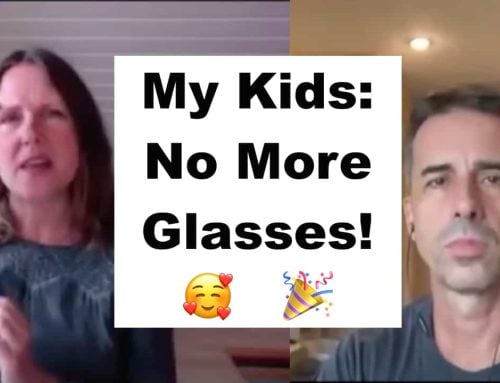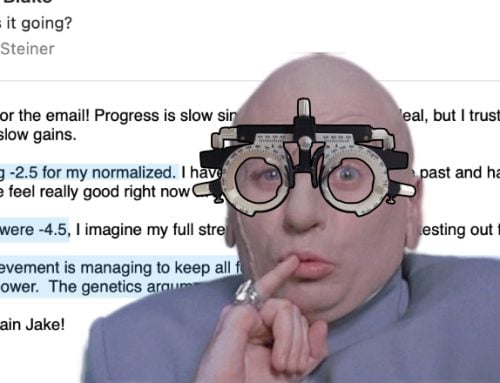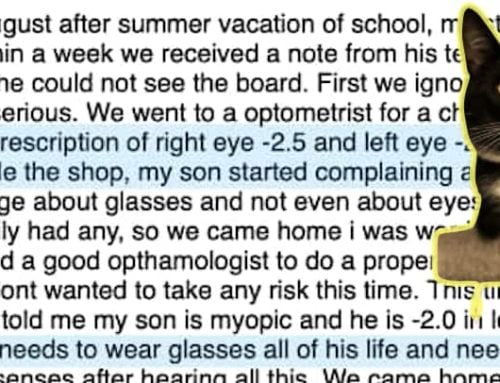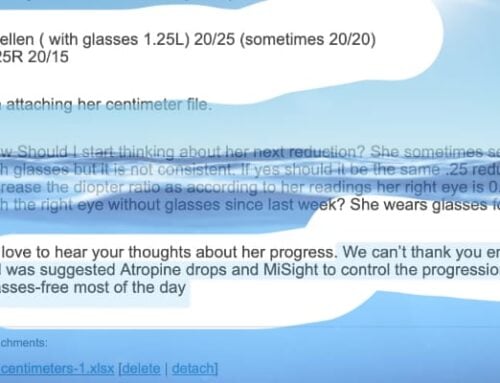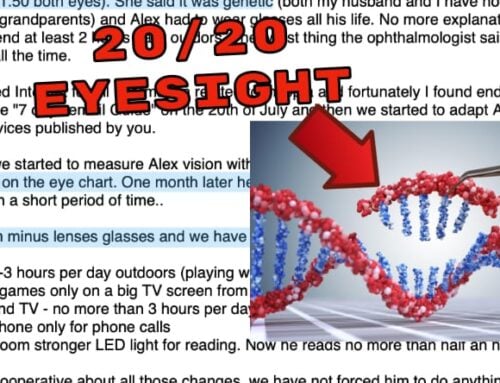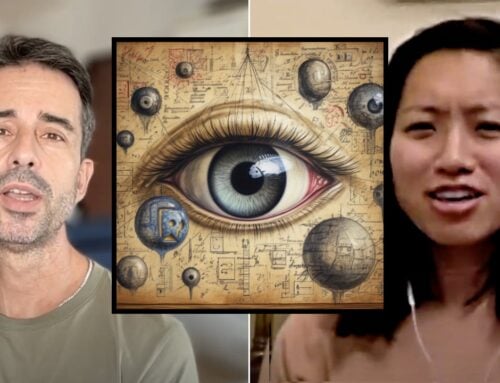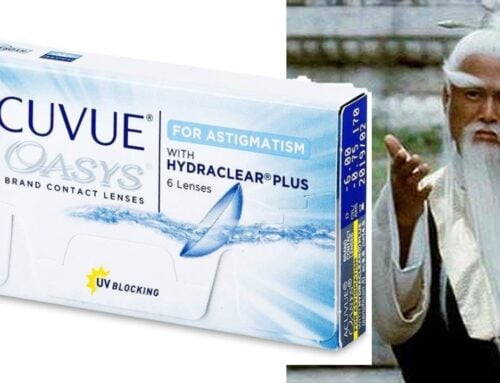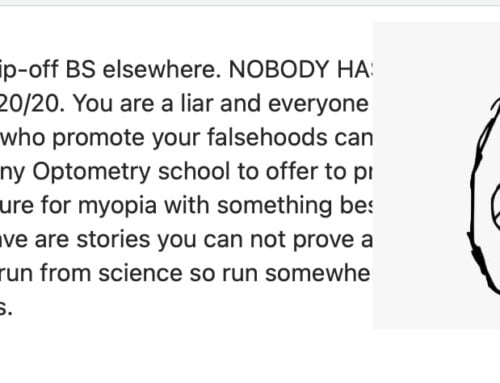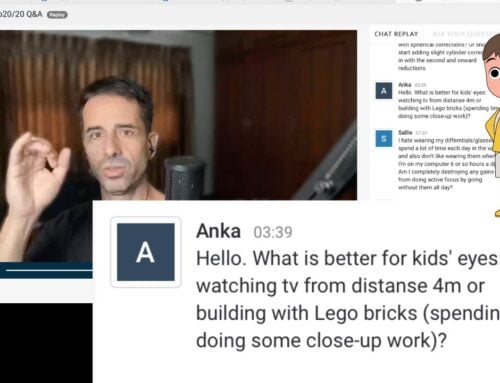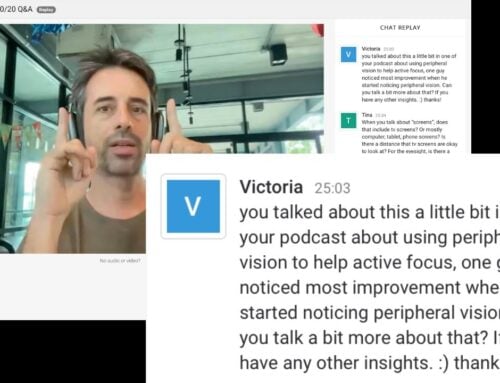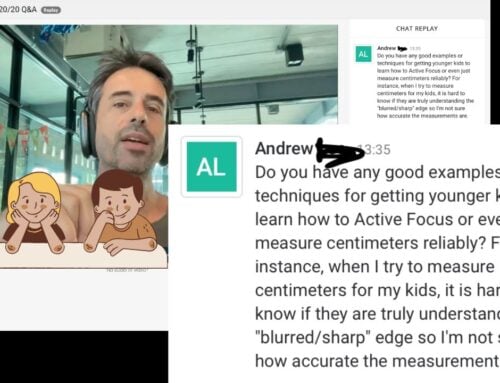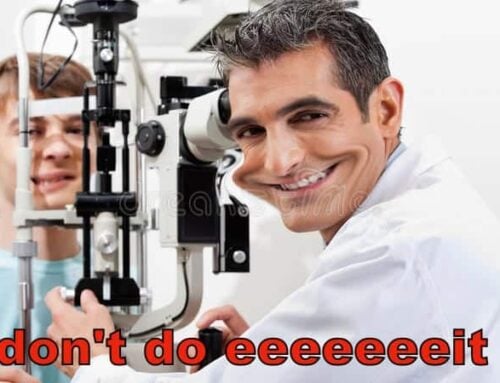Book excerpts as usual:
“The Chinese twin study already gave us a tantalizing glimpse at the potential solution to the myopia problem. Genetics have an apparent effect on myopia development but as the study shows, so does the environment. And since you now already know how the eye works, and it’s fascinating mechanism for axial change based on visual stimulus, you are already guessing at the possibilities here.
Here is another big picture clue on the whole myopia subject. The global epidemic that is now affecting as many as 90% of school children in some countries, the apparently insurmountable decline of eyesight health, it didn’t exist even 50 years ago. Take that in, for a moment.
Yes, there was very very little incidence of myopia even in many of our lifetimes. Talk to some of the older people you know, whether they needed glasses when they were young. Truly, find anyone over 60 or 70 years old, and ask them if they wore glasses when they were 12 years old. Did they have problems seeing the blackboard at school?
I’m sure you already know the answer. Still if you feel curious, go around and ask. Ask ten people in their 60’s and 70’s, and tally the responses. This is an experiment we will have to edit out of the book for future generations, as nobody will remember anyone who didn’t need glasses (at least if things continue as they are). Especially in places like Singapore and Hong Kong a life without glasses will become a rarity for anyone in our lifetimes. That’s how much myopia has become a very sudden issue, affecting over 1.2 billion (billion!) people worldwide. And yes, there was no such thing as sweeping myopia, even recently. More interestingly still, myopia is barely affecting agrarian societies to this day. Basically, wherever less of the population is spending their first few decades in school and subsequent lives in front of computer screen, there is less myopia occurrence.
This is also not really a debated topic. There are quite literally thousands of studies showing the statistically significant relationship between myopia and the close-up time for any particular population. The studies range from sweeping and somewhat vague, to rather specifically measuring close-up hours.
In 2008 JAMA Ophthalmology published a study, titled “Myopia, Lifestyle, and Schooling in Students of Chinese Ethnicity in Singapore and Sydney”. It is important that you already know about genetics and myopia, and the fact that we can’t discount genetics entirely. But we have lots of studies like this one to look at, where the researchers found the same ethnicities and compared their myopia progression in different environments.
The goal of that particular study was “to compare the prevalence and risk factors for myopia in 6- and 7-year-old children of Chinese ethnicity in Sydney and Singapore.” Here is the method that was used to conduct the study: “Two cross-sectional samples of age- and ethnicity-matched primary school children participated: 124 from the Sydney Myopia Study and 628 from the Singapore Cohort Study on the Risk Factors for Myopia. Cycloplegic autorefraction was used to determine myopia prevalence (spherical equivalent ≤ −0.5 diopter). Lifestyle activities were ascertained by questionnaire.”
And what were the results?
“The prevalence of myopia in 6- and 7-year-old children of Chinese ethnicity was significantly lower in Sydney (3.3%) than in Singapore (29.1%) (P < .001). The prevalence of myopia in 1 or more parents was 68% in Sydney and 71% in Singapore. Children in Sydney read more books per week (P < .001) and did more total near-work activity (P = .002). Children in Sydney spent more time on outdoor activities (13.75 vs 3.05 hours per week; P < .001), which was the most significant factor associated with the differences in the prevalence of myopia between the 2 sites.”
We have the same ethnicity, the same occurrence of myopia in the parents, to rule out much of the “is it genetic” debate. Most of what is left is close-up use, which in this case is a strong indicator that lifestyle, the environment and distance at which the eyes are used, play a significant role in myopia development.
I didn’t cherry pick this study. Of course it is very easy to find all sorts of conflicting information, and to find studies that make whichever argument the author is trying to substantiate. In the case of environmental myopia development there isn’t much debate for a counterargument. Most research agrees that the environment is a significant contributor to myopia, well highlighted by this study. Look at the numbers there, 3% myopia in 7 year old Chinese ethnicity children in Sydney, and a staggering, almost unbelievable 29% in Singapore. What would you do if you child is 10 times more likely to contract some permanent and serious illness in one place, over another? I’m sure you’d be tempted to move away from the massive high risk, one-in-three-odds locales!
You might notice how I am building a case here for you. It’s as though you are the jury in a trial over the perpetrator of myopia, and I am introducing evidence piece by piece. First we looked at the accuser, the myopia diagnosis. We looked at the narrative of “permanent myopia” and how it curiously serves a 100 billion dollar profit motive of the lens industry. We then looked at the argument of myopia being some sort of genetic problem. Then we learned about the role the eye plays in this, let’s call it the witness in our trial of myopia. We found out that the eye is designed to respond to visual stimulus of the environment and specifically changes to adapt to such stimulus. And now we see that studies show that indeed the biology of the eye mirrors the practical experience of children in different types of environments. The case is getting strong, your honor!
I’ll provide you some links for further studies on this subject, as these very strongly tie together the biology of the eye, designed to adapt, and the new environmental changes. There was very little myopia 50 years ago because most of us didn’t spend our youths playing smartphone games and our adult lives in front of computers. And if you go back further, a hundred years, more, myopia is almost unheard of anywhere but in monks and scholars. Again, these were the only affected areas, as they spend a lot of time up-close. It’s no coincidence that the eye designed for distance vision, and designed to adapt to environmental inputs, is responding exactly as the biology suggests that it would.
Let’s spend a bit more time to look at the two types of myopia created by the environment. We have the pseudo myopia for which I want to show you clinical references, and then the other, more sinister part of the environmentally caused myopia. It’s what you worry about most, the myopia that keeps creeping higher and higher. I will show you how this increasing myopia is tied directly to the “treatment” proposed to your children. It all unravels rather neatly, when we look at all the pieces one at a time.”
—
These excerpts are all from the first draft.
I’m on the third draft as of right now. Changes include more studies to substantiate points made. I’m also working on reducing the finger pointing at the establishment, and making it more of a case of “what we knew then” and “what we know now”. We need to give optometrists an “out”, a way to save face. That way they can adapt to these ideas without calling in question their professional practice.
Hopefully a few more weeks and this will be ready to be in your hands.
Cheers,
– Jake


